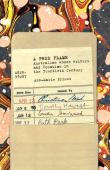'The question of vocation takes centre stage in the two volumes of Ruth Park's autobiography, A Fence Around the Cuckoo and Fishing in the Styx. From earliest childhood, Park writes, she knew she would be a writer: 'It had been as if a voice spoke from a burning bush.' Her depiction of her vocation to the literary life contains all the classic elements of the artist's call: it came out of nowhere, it was a summons that could not be set aside or ignored, and it shaped her destiny. Normally, however, this call takes shape in a specific cultural context: the little girl who longs to be a writer begins her life as a passionate reader surrounded by books, and as part of a family or society that holds writers (in the abstract, at least) in high esteem. Park's context was very different. According to A Fence Around the Cuckoo, for the first ten or so years of her life, she had no books, and no access to books. In the early 1920s, her father was part of a work gang that travelled around remote parts of the North Island of New Zealand building roads and bridges, and until she was six years old her home was a tent. Neither her father nor her seamstress mother owned any books. Even when the family settled in the tiny town of it Kuiti, where Ruth would go to school, books were in short supply. As Park Writes in Fence, 'No one I knee. had any books.' The irresolvable problem of Poverty was compounded in the wider community by a moral distrust of all that books stood for. As Park explains, 'It was thought that reading poked your eyes out and kept you from doing wholesome things.' (Introduction)



